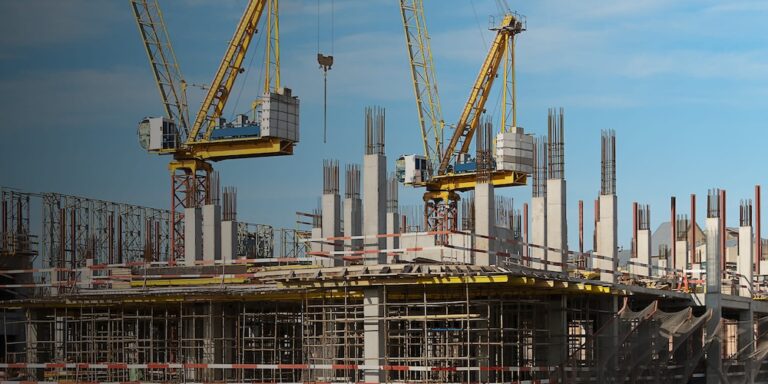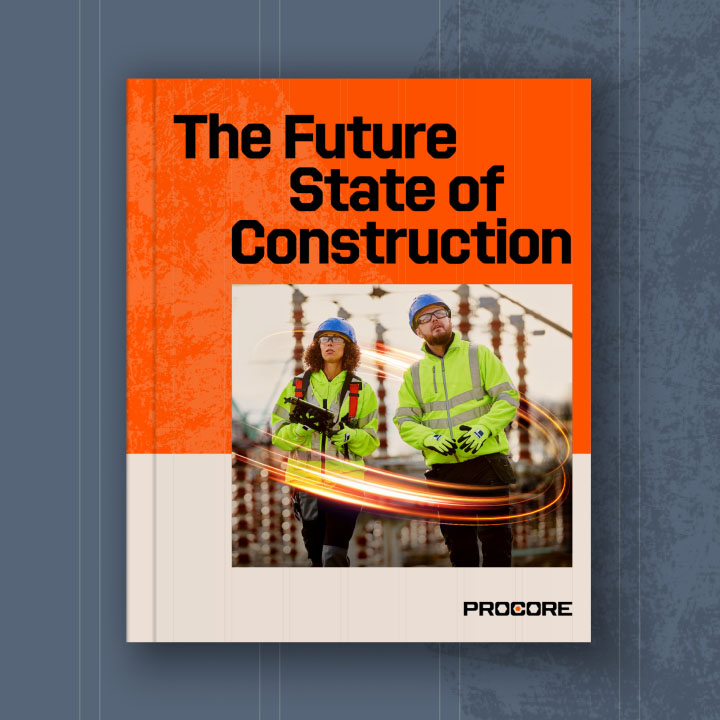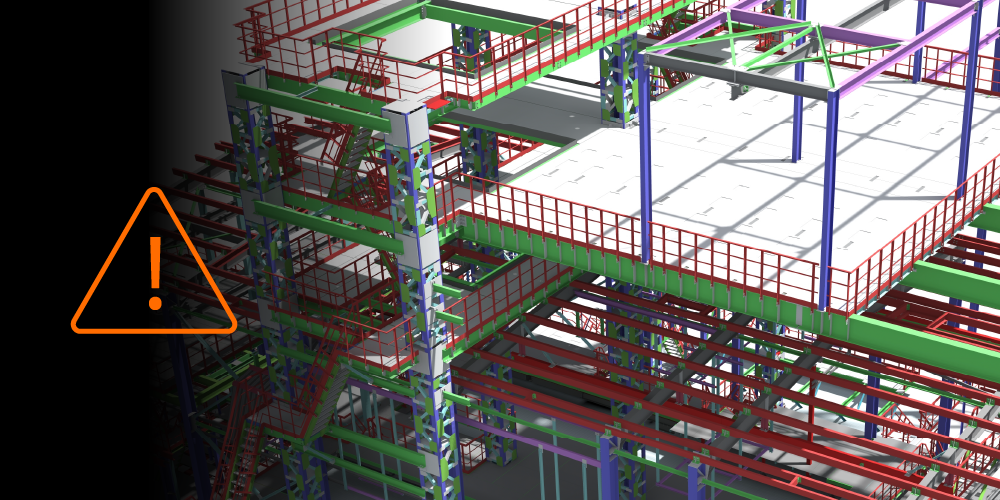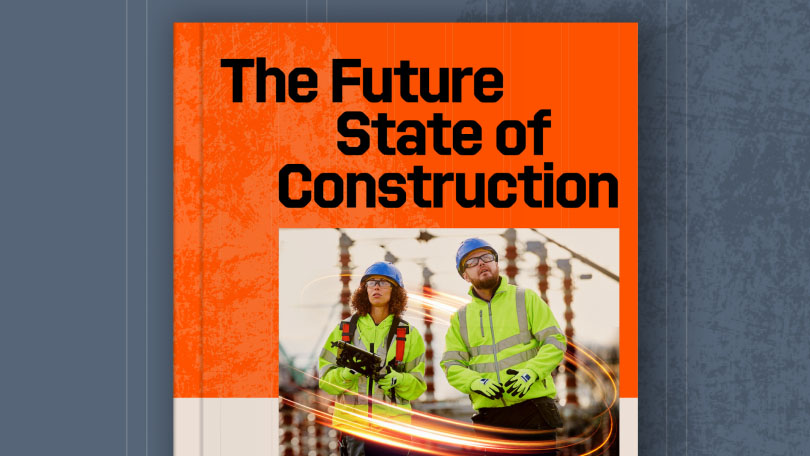Related Articles
— 9 min read
Growing Profit Margins in Construction: ANZ Estimating Tactics

Last Updated Sep 10, 2025

Brendan McGurk
Strategic Product Consultant - Construction Financials
21 articles
"Brendan is a Strategic Product Consultant for Procore Financials, where he enjoys leading and innovating internal company processes to deliver on both public and private projects. He brings 12 years of experience working in various construction roles ranging from builder's hand to quantity surveyor and project manager on both the owner and main contractor side.
Originally studying Accounting, he changed direction to quantity surveying after the Christchurch Earthquake in 2011. He is now qualified and an NZIQS-recognised Quantity Surveyor. He’s since worked on projects from feasibility, concept design, and value engineering right through to construction and post-construction support.
Last Updated Sep 10, 2025

Successful construction company management requires a diverse skillset. You’ve got to be on top of project management, workforce planning, and financial management.
When it comes to the financial aspect of managing a construction business, the most important focal point is your profit margin: how much you’re making on the projects you work on.
That’s because your profit margin has implications for shareholder success, competitive advantage, and your ability to invest further in business growth.
In this article, we’ll explore construction profit margins in detail. We’ll cover: What profit margin means in construction, the factors that affect it, how to calculate it and best practices for improving your construction profit margin.
Learn More: Key Financial KPIs in Construction
Table of contents
Understanding Profit Margins in Construction
In construction, the profit margin is the money you have left after you pay all the project costs.
For example, let's say you made $40m in revenue last year. But to make that happen, you had to spend $30m on various expenses (labour, equipment, rent, advertising, and so on).
The resulting figure ($10m) is your net profit for the year.
Profit margin is expressed as a percentage, so you need to divide the net profit figure by your total revenue ($10m / $40m) to reach a net profit margin of 25%.
Another way to think about profit margin is on a dollar basis. For instance, a 25% profit margin tells you that for every dollar you make in revenue, your company keeps 25% of it as profits.
Understanding profit margin in this manner highlights its importance.
The higher your profit margin is, the more revenue you have left for ventures like:
- Investing in future expansion and growth
- Keeping stakeholders happy by paying out dividends and buying back stock
- Making capital investments to prevent equipment breakdowns and maintain a competitive edge
So, what factors must one pay attention to to improve profit margins?
Factors Affecting Profit Margins
Profit margins can be improved by raising prices or reducing costs. Here are the most important factors affecting your construction organisation’s profit margins:
- Estimate accuracy
- Materials and shipping costs
- Contract structure
- Labour costs and availability
- Government regulation
- Economic and sector performance
Understanding what factors affect your company's profit margin is critical—doing business in Australia and New Zealand? Read on to learn about the current state of construction profitability in these regions.
Top Profitability Factors in Australia and New Zealand
While the accuracy of your estimates will profoundly impact your ability to generate a solid profit, the biggest challenge for construction businesses is that most projects are fixed-price contracts.
If costs go up after you've set the job price, you'll make less money than planned.
Our How We Build Now 2023 report found that 30% of leaders are rethinking contracting models because of this.
However, not all factors affecting construction profit margins are under your direct control. Here are five of the biggest impacts on Australian and New Zealand builders.
1. Material and Shipping Costs
This is currently a problem in Australia and New Zealand, with COVID-related increases due to high shipping costs and price increases in raw materials all plaguing the industry.
2. Supply Chain Disruptions
In 2023, Australian ports are still highly congested as post-COVID shipments arrive and clog up terminal yards.
This significantly impacts construction businesses' ability to complete jobs on time, pushing costs up and profit margins down.
3. Labour Costs
The same goes for labour costs.
Construction projects don’t get off the ground without people. If the cost of labour goes up—a problem right now for Australian building companies facing a labour shortage—then profit margins decrease.
4. Changes to Regulations
Changes to local and international regulations can dramatically impact construction profit margins.
Tariffs imposed on certain imported timbers have caused problems for Australian builders, and New Zealand-based residential construction companies have had to adjust to recently introduced Healthy Homes standards quickly.
Again, the margins fall when the cost of completing a job goes up, and there’s no room to increase the price.
5. Economic and Sector Performance
Construction projects typically involve long chains of suppliers and contractors.
In the event of an economic slowdown, such as we are facing right now, entire sectors can grind to a halt.
As it stands, both the Australian and New Zealand construction markets are looking to slow as an economic downturn and high inflation reduce buyer confidence and the number of new projects kicking off.
With this in mind, the construction business in ANZ will want to keep a close eye on profit margins. Here’s how.

How to Calculate Your Construction Profit Margin
In construction, we generally see four kinds of profit expressed in financial statements:
- Gross profit
- Operating profit
- Pre-tax profit
- Net profit (or net income)
We’re primarily concerned with our net profit margin, as this metric informs us about the ability to fuel further growth opportunities.
However, you need to calculate the other types of profit along the way to arrive at the net figure anyway, and they can be useful for investors considering purchasing stock in your company.
So, here’s the process you’ll need to go through to determine your net profit margin.
Gross Profit
First, you take your sales revenue, then subtract the direct costs of producing that revenue. In construction, those are expenses like labour and equipment hire.
Things like rent and office expenses aren’t listed here; we’ll cover those later.
What’s left over is your gross profit.
Example:
Last year, our construction company made $40m in revenue, with $15m in cost of goods sold (COGS).
$40m - $15m = $25m
Operating Profit
With your gross profit figure in hand, subtract all of your indirect costs. These include the costs associated with marketing and advertising your services, maintaining a company head office, and so on.
The remaining figure is your operating profit.
Example:
Indirect costs total $9m for the year. Subtracting that from our gross profit figure ($28m), we get our operating profit for the period: $19m.
Pre-Tax Profit
Next, take your operating profit and account for interest charges on your debt, new cash received from investors, and cash inflows or outflows related to purchases or sales of stocks.
That’s your pre-tax profit.
Example:
We didn’t receive additional funding this year but have $1m between debt repayments and stock repurchases.
Our pre-tax profit for the period was $18m ($19m - $1m).
Net Profit
Lastly, account for taxes paid on your income, with the final figure being your net profit for the period.
Example:
Finally, we account for our year's taxes, totalling $8m.
Subtracting this amount from our pre-tax profit of $18m, we arrive at a net profit figure of $10m.
Net Profit Margin
Finally, we want to know our net profit margin, expressed as a percentage of revenue.
We take our net profit and divide it by our total revenue:
$10m / $40m = 25%
So, we cleared a 25% net profit margin for our most recent financial year.
Best Practices for Improving Construction Profit Margins
Incorporate each of these best practices—or prioritise those that will have the most significant impact—to drive construction profitability over the long term.
Get on top of your financials.
Your first step in improving profit margins is to set your house in order.
Begin by implementing a financial management platform and connecting your various accounting and finance tools.
A construction-focused platform like Procore can be a good way to ensure the in-platform terminology makes sense and integrates neatly with your project budgets and estimates.
Then, review historical data, looking for answers to these questions:
- What does our profit margin look like for the different services we offer?
- How has profit been tracking over time?
- What external and internal factors have impacted profit margins?
Finally, establish or fine-tune your accounts receivable and payable policies.
On the accounts payable side, structure the due dates on supplier invoices after you typically receive customer payments. This will help you avoid late payment fees or overdraft charges.
For accounts receivable, establish and distribute firm guidelines. Consider:
- Will you send preliminary notices?
- Will you offer early payment discounts—and how much?
- When to send payment reminders?
- When to engage a collection agency?
Leverage modern construction tech.
Improving construction profit margins requires effective management of each job and the bigger picture—effectively managing the organisation.
Construction reporting and analytics tools are an excellent place to start here, providing access to insights like:
- Historical rate tables to improve forecasting and job costing
- Potential risks and their inherent costs
- The profitability of different job types
The most adept tools also leverage automation and artificial intelligence to help speed up workflows and improve labour productivity.
Consider how your company can leverage such tools to increase profits.
See what’s coming in construction over the next decade.
Download the Future State of Construction Report for insights, trends, and innovations shaping the industry over the next 8–10 years.

Hire for long term growth.
Workforce planning is an often overlooked but compelling way to improve profit margins.
Teams who can work more efficiently, with fewer leadership interventions and fewer mistakes, inevitably make for more profitable projects.
Here are three important strategies to incorporate:
- Change your hiring approach to favour long-term growth potential over immediate needs in new hires. Revise job descriptions and interview questions to focus on potential, investing in your team's future and offering lasting value.
- Design and implement a solid onboarding and training program to ensure team members can constantly access training materials. Create an onboarding checklist and centralise training documents for easy access, setting new team members up for immediate and ongoing success.
- Invest in cross-skills training to boost your team's versatility. Team members with more diverse skill sets can cover more ground, work across more projects, and help you reduce the need to rely on expensive short-term specialised labour.
Prioritise productivity increases over cost cutting
While cost control may be a valuable exercise, it can often come at the expense of quality and productivity, hurting your reputation and, as a result, your bottom line.
Instead of looking for corners to cut, focus on identifying opportunities to improve productivity.
Implement a project management platform, onboard all staff members, and build standard workflows.
Monitor how work progresses and look for bottlenecks. Then, eliminate them by providing further training, supporting documentation, or building automated workflows.
Consider, for example, the need for a senior team member to sign off on an apprentice’s work. This is a bottleneck in many cases, which you might reduce by loading all approvals into an end-of-day task, reducing the need to pull that senior person off the tools.

How Leading Companies Protect Construction Profit Margin
A substantial construction profit margin is not only a signal of a healthy business. It means more money in the bank to pay dividends or invest in future growth opportunities.
But understanding how to calculate profit margin is only half the battle; adopting best practices and strategies for protecting and improving it is what matters.
Discover why 49% of companies in Australia and New Zealand are turning to construction management platforms to reduce costs, improve quality, and ultimately improve profit margins.
Download the How We Build Now 2023 report here.
Categories:
Written by

Brendan McGurk
Strategic Product Consultant - Construction Financials | Procore
21 articles
"Brendan is a Strategic Product Consultant for Procore Financials, where he enjoys leading and innovating internal company processes to deliver on both public and private projects. He brings 12 years of experience working in various construction roles ranging from builder's hand to quantity surveyor and project manager on both the owner and main contractor side.
Originally studying Accounting, he changed direction to quantity surveying after the Christchurch Earthquake in 2011. He is now qualified and an NZIQS-recognised Quantity Surveyor. He’s since worked on projects from feasibility, concept design, and value engineering right through to construction and post-construction support.
Explore more helpful resources

Managing Direct Costs in Construction: How Visibility Drives Profitability
Direct costs define the financial reality of every construction project. They cover the labour, materials, and equipment that drive delivery and determine profitability. But even the best-planned budgets can shift...

BIM Clash Detection: Reducing Rework, Delays, and Risk in Construction
Design clashes can be a significant hidden cost in construction, as each conflict between systems risks expensive rework, project delays, and reduced margins. BIM clash detection empowers teams to identify...

Next-Gen Job-Costing: Ready to Move? 5 Things to Consider Before You Get Started
In this three-part series, Quantity Surveyor turned Financial Solutions Specialist Clint Burgess uncovers the real-world gains for people, processes, and profits when businesses move from legacy to next-generation Enterprise Resource...

From Workarounds to Workflow: Solving Construction’s Legacy Job-Costing System Challenges with Next-Gen Tools
In this three-part series, Quantity Surveyor turned Financial Solutions Specialist Clint Burgess uncovers the real-world gains for people, processes, and profits when businesses move from legacy to next-generation Enterprise Resource...
